Opinion
Dr. Sathis Jayasinghe, the Humanitarian
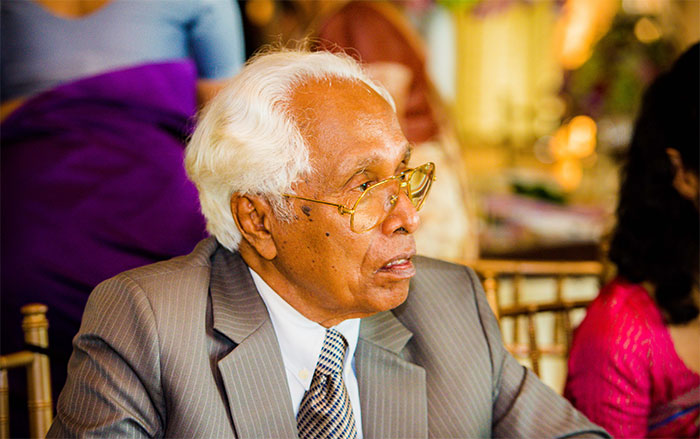
Appreciation
Dr. Sathis Jayasinghe – Humanitarian in Life and Service
The medical profession lost one of its noblest practitioners when Dr. Sathis Jayasinghe became another victim of the Covid-19 pandemic.
A look back on his life and antecedents reveal many salient features worthy of note. Sathis was the eldest son of Harriet Mary Wijegunawardena and Alfred Benjamin Jayasinghe, a state functionary from Paiyagala, who at times acted as President, Rural Court, Kalutara District.
He seemed determined to gain from the emerging positive academic environment in the country.
As a result, two of their children achieved eminence in medicine. The third boy in the family obtained a rare Doctorate in Chemical Engineering from the University of London. Two other children graduated from the University of Ceylon, Peradeniya. Another girl rose to be Assistant Controller in the Central Bank. The youngest boy in the family became the Managing Director of the family owned Nursing Home in Sri Jayawardenapura.
Benjamin Jayasinghe who died comparatively early, would have breathed his last, a contented man having produced such talented children.
Sathis, after a serving few years in the Government service armed with a post Graduate Diploma in Child Care in London, returned to Sri Lanka and commenced his private practice in Wattala. Since the outset of his practice, he established an enviable reputation for his commitment and unremitting care in treating patients. As a result, he endeared himself to thousands of patients in Wattala and its vast environs.
He married Rohini, the daughter of Simon O. Sirimane from Bentota. The two Sirimane brothers James and Simon were amongst the wealthiest rubber planters of that time. The Sirimanes also had extremely high connections with political leaders who headed this country. Sathis and Rohini became an ideal and compatible couple throughout their lives.
Sathis’s promising career was further embellished when he became President J.R. Jayewardene’s Personal Physician. This led to a mutually beneficial tie up with the Head of State. As a result, he and Rohini were able to visit many countries along with the President .
In the early 1980’s, the lack of opportunities for medical education, which had been evident for some time, aggravated. To be fair by those who aspired for medical education, but could not obtain a place in the local Medical College, there was a need to fill this vacuum.
The pioneering vision of Sathis and a few other Doctors enabled the establishment of a private medical College, namely the North Colombo Medical College. This proved to be a boon to many potential doctors, who achieved eminence in Sri Lanka and overseas in the field of medicine.
It is needless to say that despite all these commitments, Sathis continued his practice at Wattala ,where he demonstrated his rare and unique qualities of kindness, humility and patience .
Even the greatest of men have to confront the inevitability of death. The Buddha, in his sublime preachings, has referred to impermanence which is a fact of life.
We, the members of the family, cherish the life and services of Dr. Jayasinghe, a great humanitarian. He has created a vacuum in our lives which is extremely difficult to fill.
May He attain the Supreme Bliss of Nirvana!
JAGATH and JAYANTHI SAVANADASA
jaysavana123@gmail.com
Opinion
Are cracks already showing ?
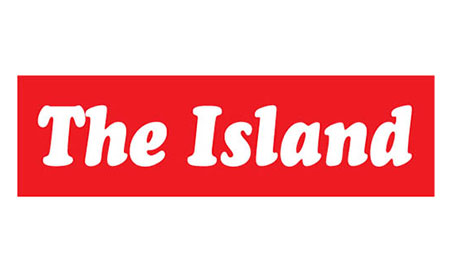
I thank Dr P. A. Samaraweera for giving me the opportunity to explain further why I think the new government is not different from previous regimes. It seems to be better in some respects, in the short term, which is the norm for new regimes, but most seem at best cosmetic. In his opinion piece “Cracks are showing already – a response” (The Island, 8 November), in response to my piece in The Island of 1st November, Dr Samaraweera says, “UW has not offered an alternative. Is he of the opinion that the SJB, the SLPP or Ranil’s crowd would do better?” I do hope the new regime will succeed but with the proviso that it should take constructive criticism and make course corrections. It is not for me to suggest alternatives but comment when things go wrong. In fact, I was among the first to criticise Pohottuwa when things started going wrong, posing the question “Pohottuwa: Will it blossom or wither?”
Though Dr Samaraweera states mammoth crowds are attending NPP meetings, I have seen a number of reports that voter apathy has already set in and groups who helped AKD to win the presidency seem already disenchanted. This is well stated in the editorial, “Tuk-tuk tut-tutting and ground reality” (The Island, 4 November):
‘Many are those who are tut-tutting over the latest fuel price revision, which has not brought any relief to the general public; trishaw drivers, who served as the JVP-led NPP’s grassroots propaganda foot soldiers, as it were, are prominent among them. Quite a few of them are openly critical of the NPP government.’
Corruption comes in many forms, financial corruption being the most talked about in relation to politics. The NPP does not seem to be guilty of this type of corruption yet and seems to be chasing after politicians guilty of this but at the moment it seems to concentrate on illegal vehicles! But it is certainly guilty of the other type of corruption; ‘jobs for cronies’ and the probable protection of those who have question marks raised against them, as well demonstrated by the Ravi Seneviratne-Shani Abeysekara affair!
Ranil appointed two committees on the Easter Sunday bombing towards the end of his term and some have justifiably questioned his motives but these should have been done at the time of the appointment. Udaya Gammanpila has done the right thing by making the committee findings public, a duty that should have been performed by the President who was elected on the promises of transparency and honesty. As mentioned in my previous article, when he was questioned about these at the ceremony presided over by Cardinal Ranjith in the Katuwapitiya Church on 06 October, the President’s evasive answer gave the impression that he had not read the reports but now it transpired otherwise.
Had the new government, which demanded the release of those reports while in Opposition, decided that it did not agree with the findings and decided to ditch the recommendations, it should have done so, before the expose by Gammanpila. Instead, there were implied threats to Gammanpila! Then followed the vilification of him on social media. Worse still were the accusations made against Justice Janaki de Alwis. Gammanpila’s challenge to justify those accusations has been ignored by the government.
The other report from the committee, headed by Justice S. A. Imam, the findings of which were released by Gammanpila, after I wrote my last piece, exposed unverifiability of the UK Channel 4’s claims. No reasons have been given by the government or Cardinal Ranjith, who has now admitted that he was in possession of both reports, for rejecting this report. Is it that they have already decided who the mastermind is and will appoint yet another committee to support their view?
Another interesting question is whether Cardinal Ranjith has let down the Catholic community by his actions. Perhaps, it is best left for that community to decide.
As the De Alwis Committee recommended taking legal action against both Ravi Seneviratne and Shani Abeysekara, can they be a part of a future investigation into the Easter Sunday attacks, even if the government has decided to discard the report. When there is an element of doubt, in a crucial investigation of this nature, should they be allowed to continue in positions where they could influence the outcome? They should have stepped aside till their names were cleared.
Dr Upul Wijayawardhana
Opinion
Need for alternative fuel source

The Middle East conflict is raging. There are reports of one merchant ship being set on fire. If it escalates further, Sri Lanka’s economy will suffer.The cost of fuel amounts to nearly 30% of Sri Lanka’s total imports. There are also fears that the availability of petroleum-based fuels will be over in the world soon.
It is high time Sri Lanka reduced its independence on imported fuel.
Only China is said to be seeking self-sufficiency in fuel viz the production of Butyl alcohol (Butanol). They are said to target 100 million tons to be produced in the near future. Hydrogen is a by-product of producing Butyl alcohol.
It is used to generate electricity through fuel cells. China is said to manufacture about 10% of the fuel cells in the market. The fuel cells were expensive as the critical unit was made out of platinum. A few years ago, the Cambridge University developed a catalyst based on steel to replace the platinum.
Production of butanol, as in the case with ethanol – the alcohol drink- is based on sugar, starch and cellulose.
The raw materials used for producing butanol is corn and in Brazil it is sugar cane. These are two crops that are very expensive to grow and maintain because the plant last only a year and has to be replanted annually.
There are plants available in Sri Lanka, which will last at least 25-30 years once planted, could yield about 1.5 times that of sugar cane. These crops will bear the yield in about 2.5 years after planting. There are also plants that last about 90 years
The only land mass where such plant crops could be grown in one unit is the denuded sugar cane lands at Kantale Sugar Factory. The public should be encouraged to plant sugar cane. They will gain economically from not only planting sugar cane but also from employment opportunities at sugar cane processing centres. My estimation is that about three or four million new jobs can be created as this industry is labour intensive.
Butanol distilleries are not massive structures like the distilleries at Pelwatte, Sevenagala or the old Kantale. Some Universities in the US report regularly on their work on the production of Butyl alcohol. According to the information emanating from those universities, the production facilities are slim and compact.
The technology for the production of Butyl alcohol is not found in Sri Lanka. It is best to seek the assistance of China in this regard.
Butyl alcohol distilleries are said to require four rectifying columns according to technology used in China and this fact is confirmed by a research article published in New Zealand.
There is the possibility of reducing the number of rectifying columns to two.
I have studied numerous research papers on Butyl alcohol production as I have been in the field of alcohol distillation and blending trade for a long time since 1968.
It is necessary to seek external assistance to design and build the distilleries, and it will be necessary to require the assistance of our universities to develop the processing technology to grow and process the plant materials to be used as raw material- mainly Agriculture, Plant Sciences (Botany), Chemical Sciences (Chemistry) and instrumentation. Assistance of the chemical engineering sector can be sought. This would be a profitable exposure to the students therein.
The cost of the studies to be conducted may not exceed Rs 30-40 million.
There is a fabrication factor at Wadduwa- Paiyagala, serving the existing distilleries. Work there is handled manually. Importing the stainless steel and copper pipes and machines to make flanges will help boost production.
The abandoned distillery at Kantale can be used to handle the raw materials in the central and northern parts of the country and many smaller distilleries will be needed in the other parts of the country.
There are state-owned distilleries at Pelwatte and Sevenagala and jointly owned distillery at Hingurana. These distilleries produce ethanol.
It is possible to use the ethanol produced at these distilleries as fuel for diesel-based vehicles after mixing it with additives to enhance its ignitability. A drawback will be the sheer amount of ethanol needed. A better solution is to convert these distilleries to produce Butyl alcohol. The conversion should not be very costly. The government should consider this option earnestly.
S. P. U. S. Wickramasinghe
Former Distillery Manager at Kantale. spupalisw@yahoo.com
Opinion
Sri Lanka’s missed opportunities

As the saying goes, ‘A picture is worth a thousand words.’ The above screenshot was captured on the Flightradar24 flight-tracking app at 0808 hrs on Thursday, November 7, 2024. It shows the number of flight arrivals and departures to/from the Maldives compared to Sri Lanka. The large number of small aircraft are island-hopping floatplanes conveying tourists between the Maldivian capital and the country’s many resort islands.
after all these years, Sri Lanka has still not got its act together with regard to airport usage, falling behind even small countries such as the Maldives.
In Sri Lanka, despite the ‘boast’ of as many as 16 airports, of which five are international gateways, and numerous water-landing sites, domestic aviation is all but dead, especially as an adjunct to Sri Lankan tourist infrastructure. According to a recent OPA (Organisation of Professional Associations) report on domestic aviation in Sri Lanka, the Civil Aviation Authority-Sri Lanka (CAASL) is more ‘obstructive than facilitative’.
Private aviation operators report, with reference to various approvals, that what takes the Maldivian Civil Aviation Authority two days to accomplish takes “a month of Sundays” in CAASL.
The volume of air traffic in the Maldives is so high, a new runway has been constructed and activated at the refurbished Malé-Velana International Airport on Hulhulé island, relegating the pre-existing runway to the status of a parallel taxiway. This obviates the need for aircraft landing on the new runway to backtrack along it to reach the terminal, in turn holding up other aircraft from landing and taking off. A ‘luxury’ that even Mattala Rajapaksa International Airport (MRIA) does not have in place.
Result: a smooth and increased flow of arrivals and departures, with use of the new taxiway (i.e. old runway) ensuring the new runway is available at all times for what it was intended.
But over in Sri Lanka, where are our movers and shakers of aviation tourism? What are they doing to improve aircraft movements at our major international airport? Equally importantly, what are they doing to increase the use of aviation to enhance Sri Lanka’s tourism potential? Are they asleep? Or sitting on their collective hands? Has Sri Lanka missed the (Air)bus?
What a sorry state of affairs!
Guwan Seeya
-
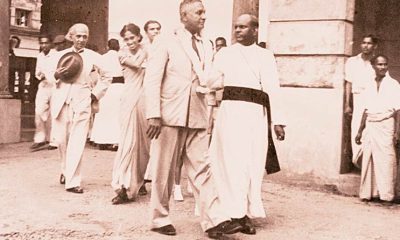
 Features3 days ago
Features3 days agoWhen Sir John Kotelawala visited St. Joseph’s College
-

 Sports7 days ago
Sports7 days agoHow Sri Lanka stunned everyone in the Hong Kong Sixes
-

 Features7 days ago
Features7 days agoA call from university teachers for a commitment to free education
-
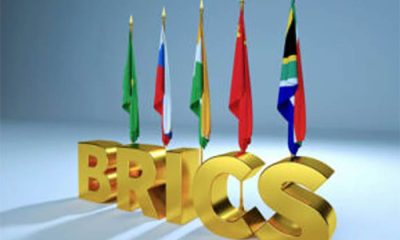
 News3 days ago
News3 days agoSL will not be able to join BRICS right now but membership of its NDB bank okayed
-

 Sports3 days ago
Sports3 days agoPathum Nissanka; the ace up Sri Lanka’s sleeve
-
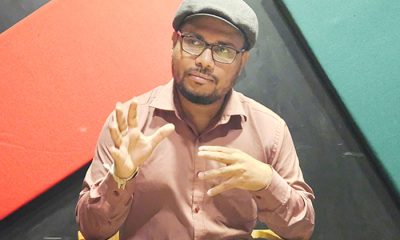
 News7 days ago
News7 days agoWijeweera’s son warns the danger of giving NPP 2/3rd majority
-

 Editorial7 days ago
Editorial7 days agoCPC skirts main issue
-

 Opinion6 days ago
Opinion6 days agoA new dawn for Sri Lanka











